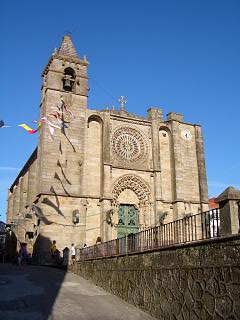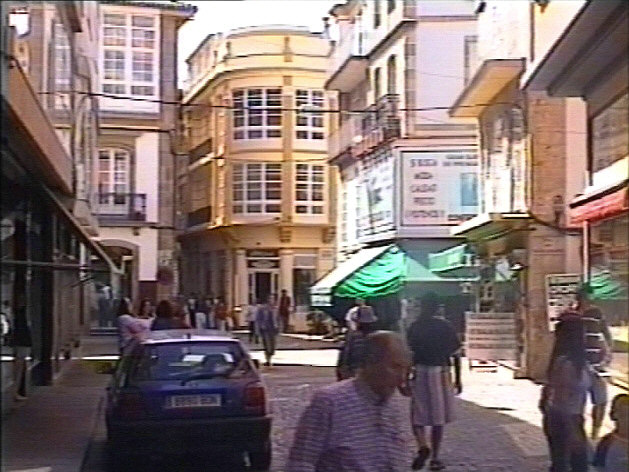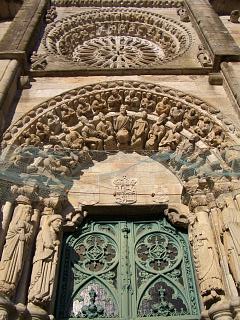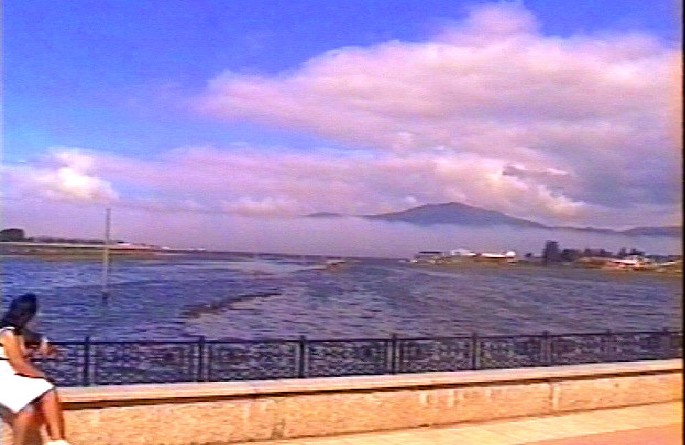Noia - A coastal town
The town of Noia (Noya in Spanish) was the original motivation behind developing this guide to Galicia and if there is a single location that represents my personal image of this region, Noia would be it.

Right, a photo of the famous old church of San Martino in the heart of the old district (2005).
With the alternative castellano spelting of "Noya", it is a thriving town on the Galician coast of Spain that combines an historic ancestry and medieval old district with some attractive local beaches and genuine Galician culture.
A brief summary
Noia started life as a small fishing village over 1000 years ago, but is now a holiday town during the summer months with most of its population working in the nearby city of Santiago de Compostela.
The town has a medieval district and there are several beaches nearby, the closest being "la praia de Testal". Most holiday visitors to the area are from Spain with many travelling from Madrid, Barcelona and the other major Spanish cities during Spain's holiday month of August. It is during this month that Noya, and many other towns in Galicia, have their main festivals. These festivals can last several days and involve music (both traditional and pop/rock), dancing, fairs, fireworks and special markets.... Interested, then read on.
Below, a typical street view in the older pedestrianised part of town. The street is cobbled and the yellow building in the center is a bakery and cafe (July/August 2004).

Why visit Noia?
I first visited green Spain in July 2000, mainly because my wife was born there and most of her family originate from the area. My first visit only lasted a week, but I was impressed by the differences between this region and the other parts of Spain I had previously visited, specifically the southern Costa’s. The spectacular scenery and stunning beaches offered a different kind of Spanish holiday, away from the commercialism I had come to expect from Iberia. The people and language were very different too and I have subsequently made regular visits back to this quaint little hamlet and enjoyed the "real Spain" experience, discovering something different on each occasion.
A few facts
Noia (that's the Gallego spelling) started life as a fishing and agricultural village.
 Indeed it is still known throughout the country for the shellfish harvested in the Autumn in the rias (bays). Over recent years however, Noia has evolved into a mixed economy, with a significant part of its revenue being generated through summer tourism. Located only 35 km from Santiago de Compostela, many of its inhabitants commute to Santiago daily, a journey of around 40 minutes. The population of about 18000 is split between city centre apartment living and homes in the suburbs.
Indeed it is still known throughout the country for the shellfish harvested in the Autumn in the rias (bays). Over recent years however, Noia has evolved into a mixed economy, with a significant part of its revenue being generated through summer tourism. Located only 35 km from Santiago de Compostela, many of its inhabitants commute to Santiago daily, a journey of around 40 minutes. The population of about 18000 is split between city centre apartment living and homes in the suburbs.
Above, the elaborate portico and arch of "San Martino" church.
A perfect Location
Noia is ideally situated on the coast at the junction of two estuarial rivers, the "Tambre" and "Traba", with a backdrop of the "San Marcos" mountains. Galicia has a coast line very similar to that of Norway with dozens of bays and inlets (called rias) littering the shoreline, nearly all hiding beautiful, and often deserted, beaches. A fitting description of Noia during the summer months would be "a typical Galician seaside town". The nearest beach, "la playa de Testal" is a 15 to 20 minute walk or 5 minute car journey, and there are over 30 beaches within a forty minute drive down the coast in either direction.
Below, looking out into the Muros Noia bay when the tide is in. The view is not so appealing when the tide is out! (July/August 2004).

The town itself has two focal points, the first is the new square or plaza ("la Alameda"), which is lined with palms and located adjacent to both the Town Hall and an old Franciscan church.
The second is the ancient medieval district in the older part of Noya with some buildings dating back 1000 years. Both these areas have many bars serving coffee, tapas and stronger beverages and they tend to be the social centres for both residents and holiday makers during the weekends and late evenings.
Find out more
If you want to discover more about this typical Galician town, take a look at the buttons in the right hand menu. From there you can find out about Noia's festivals, the medieval district, bars, restaurants, beaches and more.

